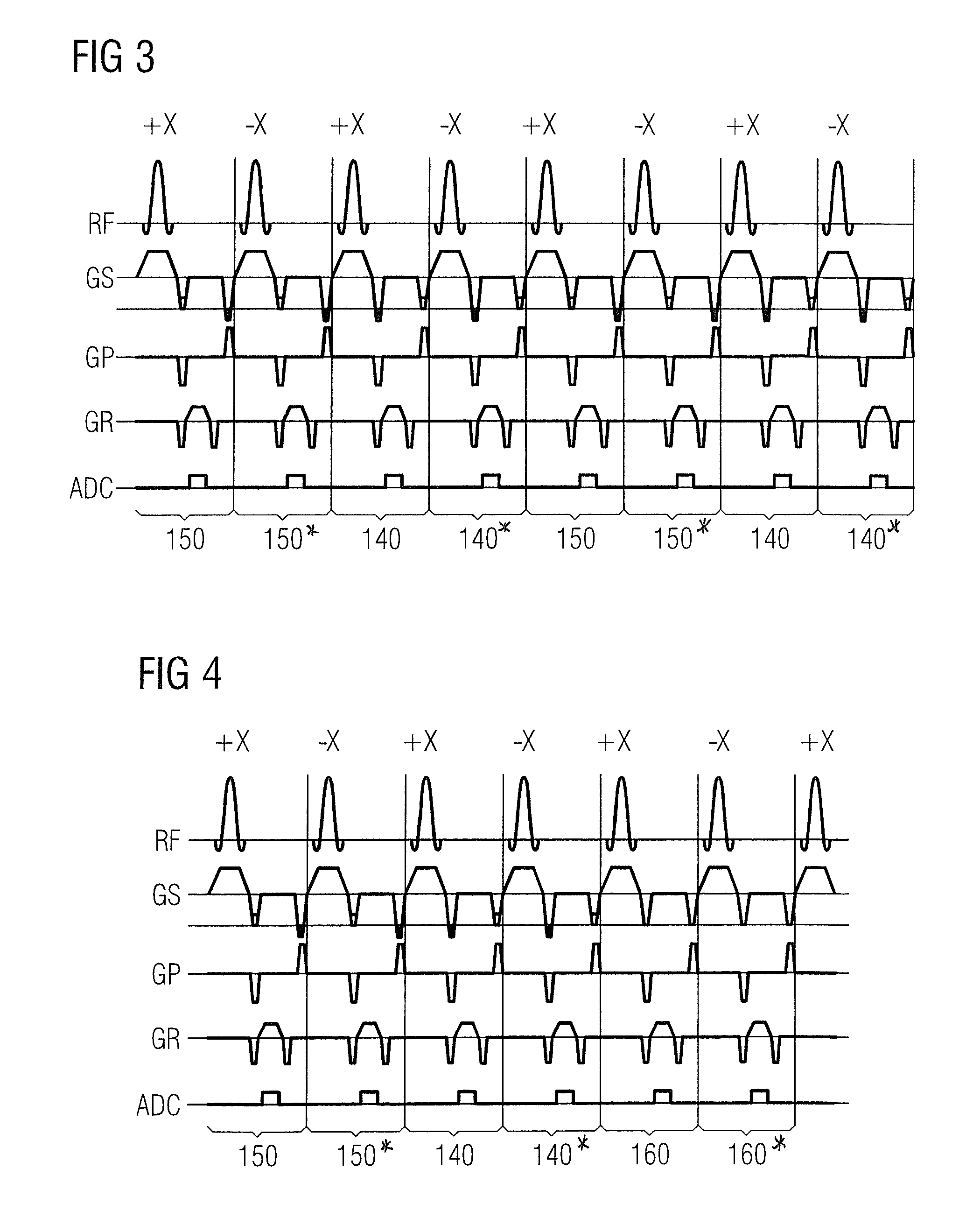Method and device for controlling a magnetic resonance imaging system
- Summary
- Abstract
- Description
- Claims
- Application Information
AI Technical Summary
Benefits of technology
Problems solved by technology
Method used
Image
Examples
Embodiment Construction
[0037]FIG. 1 shows a pulse sequence diagram of a multi-slice blipped TrueFISP CAIPIRINHA recording method (also known as SSFP-SAMS=steady state free processing simultaneous acquisition of multiple slices), in which the pulse sequence or pulse series is shown for four repetition times TR or repetition intervals RI 140, 150, 160 and 170. Each of the repetition intervals has assigned to it an RF pulse, the phase of which changes from interval RI to interval RI from +(shown in FIG. 1 as +X) to −(shown in FIG. 1 as −X) or from +180° to −180°. Furthermore, each interval RI includes a gradient pulse sequence GS in the slice selection direction. This consists, occurring chronologically, of the actual slice selection gradient and of a prephaser and a rephaser. In this case, two slices are excited simultaneously. In each of the repetition intervals, an amount is subtracted from the phase coding gradient (rephaser) or an amount is added to the phase coding gradient. For balancing, so that the ...
PUM
 Login to View More
Login to View More Abstract
Description
Claims
Application Information
 Login to View More
Login to View More - R&D
- Intellectual Property
- Life Sciences
- Materials
- Tech Scout
- Unparalleled Data Quality
- Higher Quality Content
- 60% Fewer Hallucinations
Browse by: Latest US Patents, China's latest patents, Technical Efficacy Thesaurus, Application Domain, Technology Topic, Popular Technical Reports.
© 2025 PatSnap. All rights reserved.Legal|Privacy policy|Modern Slavery Act Transparency Statement|Sitemap|About US| Contact US: help@patsnap.com



